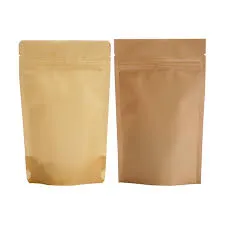- Afrikaans
- Albanian
- Amharic
- Arabic
- Armenian
- Azerbaijani
- Basque
- Belarusian
- Bengali
- Bosnian
- Bulgarian
- Catalan
- Cebuano
- chinese_simplified
- chinese_traditional
- Corsican
- Croatian
- Czech
- Danish
- Dutch
- English
- Esperanto
- Estonian
- Finnish
- French
- Frisian
- Galician
- Georgian
- German
- Greek
- Gujarati
- haitian_creole
- hausa
- hawaiian
- Hebrew
- Hindi
- Miao
- Hungarian
- Icelandic
- igbo
- Indonesian
- irish
- Italian
- Japanese
- Javanese
- Kannada
- kazakh
- Khmer
- Rwandese
- Korean
- Kurdish
- Kyrgyz
- Lao
- Latin
- Latvian
- Lithuanian
- Luxembourgish
- Macedonian
- Malgashi
- Malay
- Malayalam
- Maltese
- Maori
- Marathi
- Mongolian
- Myanmar
- Nepali
- Norwegian
- Norwegian
- Occitan
- Pashto
- Persian
- Polish
- Portuguese
- Punjabi
- Romanian
- Russian
- Samoan
- scottish-gaelic
- Serbian
- Sesotho
- Shona
- Sindhi
- Sinhala
- Slovak
- Slovenian
- Somali
- Spanish
- Sundanese
- Swahili
- Swedish
- Tagalog
- Tajik
- Tamil
- Tatar
- Telugu
- Thai
- Turkish
- Turkmen
- Ukrainian
- Urdu
- Uighur
- Uzbek
- Vietnamese
- Welsh
- Bantu
- Yiddish
- Yoruba
- Zulu
pla plastic
The Rise of PLA Plastic A Sustainable Alternative
In an era increasingly defined by environmental consciousness, the pursuit of sustainable materials has become a critical focus across various industries. Among these materials, polylactic acid (PLA) plastic stands out as an innovative and eco-friendly alternative to conventional petroleum-based plastics. Derived from renewable resources, PLA has gained significant traction in recent years, thanks to its biodegradable properties and potential to reduce our carbon footprint.
PLA is produced through the fermentation of plant starches, primarily derived from corn, sugarcane, or cassava. The process begins with the conversion of these starches into sugars, which are then fermented by bacteria to produce lactic acid. Through a polymerization process, lactic acid is transformed into PLA resin, ready for use in a variety of applications. This bioplastic not only provides a sustainable solution to plastic pollution but also promotes the use of agricultural resources in manufacturing.
The Rise of PLA Plastic A Sustainable Alternative
In the packaging industry, PLA has emerged as a game changer. Many companies have started to adopt PLA for food packaging, cups, and containers due to its safe and non-toxic nature. Not only does it help in reducing plastic waste, but it also satisfies the increasing consumer preference for environmentally friendly products. Brands that incorporate PLA into their packaging are often perceived as more sustainable, giving them a competitive edge in the market. Furthermore, as recycling systems for traditional plastics become increasingly strained, PLA offers a viable alternative, addressing both environmental concerns and consumer demand.
pla plastic

Another exciting application of PLA is in the realm of 3D printing. As additive manufacturing continues to evolve, PLA has become one of the most popular filaments among hobbyists and professionals alike. Its ease of use, low warping tendencies, and availability in a wide range of colors make it ideal for creating prototypes, models, and custom designs. Additionally, the use of a sustainable material in 3D printing aligns with the growing maker movement that emphasizes environmentally responsible practices.
Despite its many advantages, there are challenges ahead for PLA adoption. One of the primary concerns is its sensitivity to heat, which limits its application in high-temperature environments. Moreover, the agricultural practices involved in producing the raw materials for PLA can also pose challenges, particularly regarding land use and water consumption. As such, it is essential for researchers and manufacturers to explore ways to optimize PLA production and incorporate agricultural practices that are sustainable and ethical.
As the world confronts the challenges of climate change and plastic pollution, materials like PLA plastic offer a glimmer of hope. Its utilization across various sectors not only provides a step toward reducing our reliance on fossil fuels but also encourages a shift in consumer behavior towards more sustainable options. With ongoing research and development, the potential for PLA plastic can be further harnessed, paving the way for a future characterized by responsible innovation in materials science.
In conclusion, PLA plastic represents a promising solution in the quest for sustainable alternatives to traditional plastics. Its biodegradable properties, coupled with its applications across multiple industries, make it a viable candidate for reducing plastic pollution. As more businesses and consumers embrace this green alternative, the vision of a sustainable future becomes increasingly attainable. The journey towards a plastic-free world will require collaboration, innovation, and a commitment to environmentally conscious practices, and PLA plastic is at the forefront of this movement.













